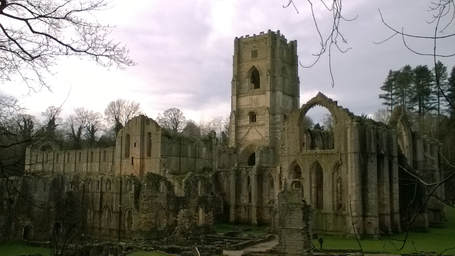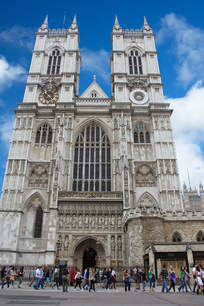|
These days all we see are the shells of the former monastic buildings and probably think no more about it, but monasteries have always held an interest to me. When I was growing up in Sheffield I lived less than 1 mile from Beauchief Abbey and every winter the land around the Abbey became a popular place to go. The land next to the Abbey church (which is all that is left standing and is still used today) is a municipal golf course in the city and has a rather long steep hill, excellent to sledging! Beauchief Abbey was established in Derbyshire in 1183 after the land was given by Robert FitzRanulph who was the Lord of Alfreton. Beauchief Abbey was run by the Premonstratensian order or white cannons. They served as priests for the surrounding churches and worked within the community. They also had farms, fish pond and a smithy on the nearby river Sheaf (the source of the city of Sheffield’s name). The abbey continued serving the community through until 1537 when the abbey surrender itself to King Henry VIII during his dissolution of the monasteries when he moved away from Catholicism and made himself the head of the Church of England. Beauchief Abbey was one of the first to go as it was 1536 that the change began. Initially the monasteries were just reformed, not dissolved. Then the abbey and land was sold to Sir Nicholas Strelley for £223(now approximately £72,000). Today Strelley Avenue and Strelley Road still exist within Sheffield (Beauchief is now an area of Sheffield and in the county of Yorkshire). The buildings of the abbey continued to be used until the 1660’s when they were taken down to build the nearby Beauchief Hall for Edward Pegg. He and his decedents continued to use the church building as their private chapel. In the 1930’s the Pegg family gave the land and buildings to the Sheffield Corporation. Much of the land became Beauchief municipal golf course and the Abbey itself still hold services to this day, albeit small services as the building is really small. In the 1950’s the Abbey building was made a scheduled monument. What did the closure of the Abbey’s mean for the population of the country as a whole. Well in general terms things became worse for our ancestors. The monks may have taken care of the spiritual needs of the community, but they also provided many other ways they helped the community. Anyone who has ever read the Brother Cadfael novels by Ellis Peters will know Cadfael was an apothecary who helped heal the medical problems of not only the Abbey, but also the town and surrounding villages. This fairly factual as the abbeys were well known for have infirmaries to tend the sick and injured. Many of the larger abbeys also acted as lodging houses where travellers and pilgrims could get board and lodgings. The main way the abbeys aided the community though was through employment. They abbey needed workers to survive. With the number of religious duties they had to preform they had no time for the everyday tasks. They employed farmer, labourers, stone masons, gardeners, cooks, housekeeper, laundry workers and many others. When the abbeys closed all these people would have lost their jobs and others would be hard to come by. This would have impacted the wider community as rent and bills couldn’t be paid and families may have become destitute. If you became destitute who would you turn to? The monasteries! So a vicious circle began. In the end if you ignore the religious aspect of the monasteries the dissolution damaged the communities surrounding them. It left the skeletons of the buildings behind to decay and be pulled down for the stone. In most cases all that’s left is the main church buildings, if anything at all. One of the most famous abbey churches still being used today is Westminster Abbey (which is actually called the Collegiate Church of St Peter, Westminster). So it is possible that the dissolution of the monasteries impacted your ancestors whether directly through losing their jobs or indirectly by the loss of the service the abbeys bought to the communities.
Comments are closed.
|
Hello and thank you for taking the time to read my Family History Ramblings on genealogy and history in general. I hope you find it informative and hopefully funny!
Archives
November 2021
Categories
All
|



 RSS Feed
RSS Feed